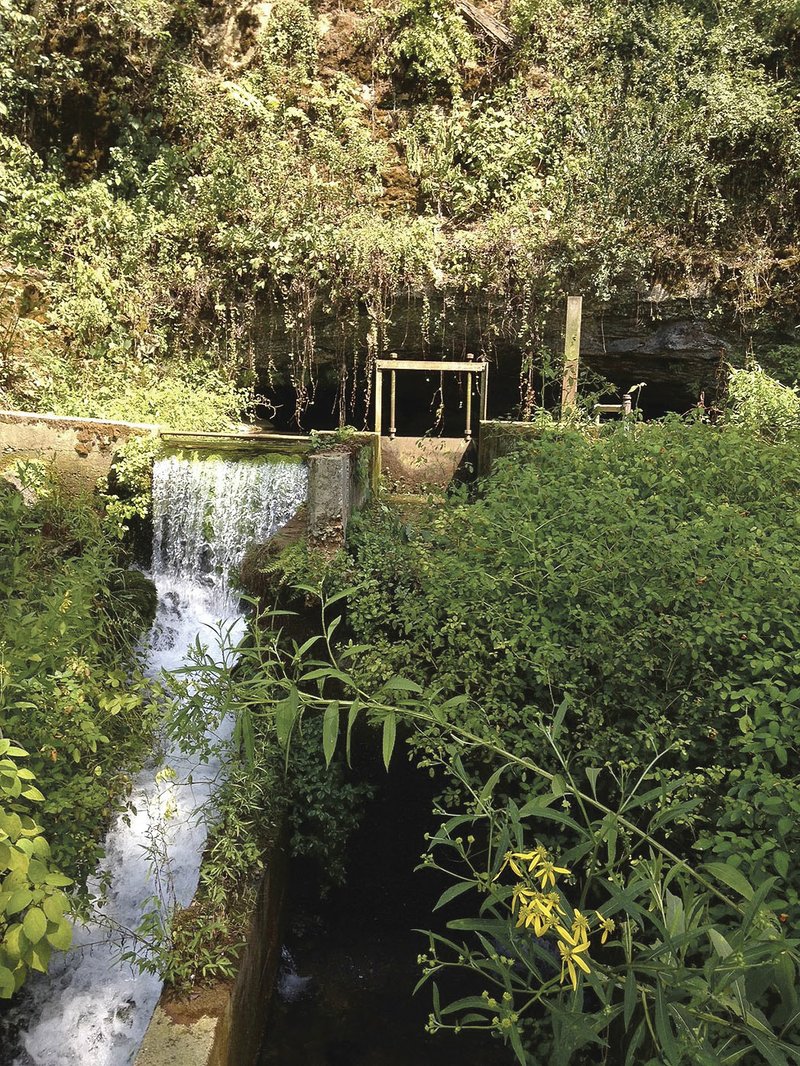By day, a gray bat maternity colony is "so loud, it sounds like a great big bazaar in there," says Arkansas State University master's student Patrick Moore. "It's full of chittering and talking all day long."
By night, the mama bats fly out of the home they've chosen -- a dome cave like the one at the Illinois River Watershed Partnership Sanctuary in Cave Springs -- to hunt for the moths, flies, beetles, spiders and other insects they consume.
FAQ
Bats & Bluegrass
WHEN — 4-9 p.m. Saturday, with bat viewing at 8 p.m.
WHERE — Illinois River Watershed Partnership Learning Center at 221 N. Main St. in Cave Springs
COST — Free
INFO — 215-6623
The gray bats prefer dens like this one: warm enough to encourage their pups' growth, with a water source inside -- so they don't have to leave the babies to get a drink -- and a lake or river nearby to provide dinner. Some 4,700 of them spend every summer in this particular cave until, when the pups are old enough to fly, they migrate to a cave in the Boxley Valley for the winter.
Moore knows more than most about the Cave Springs bats, having spent time tagging them with transmitters and following them by airplane to figure out their foraging patterns.
"Gray bats are very strong fliers, and they're fast," Moore says. "The distance they fly in one night is like me going from Cave Springs to Greenland for a cheeseburger -- and running there."
They're also very protective of their young -- which are born one per bat per summer -- "and invest a lot of time and resources in raising them," he says. Males are banned from the maternity colonies, living instead in "transient caves" until fall, when they meet up with the females to make more babies.
In addition to the gray bats, which conservation has brought back from crisis, the Illinois River Watershed Partnership Sanctuary is also home to other rare and endangered species, including Ozark cave fish -- which coincidentally enjoy noshing on bat guano, says Delia Haak, the executive director. "The Illinois River Watershed Partnership works to improve the integrity of the Illinois River through public education and community outreach, water quality monitoring and the implementation of conservation and restoration practices throughout the watershed," according to its mission. And that means sharing the tale of the bats this weekend at the Bats and Bluegrass event.
In addition to an opportunity to build a bat house between 4 and 6 p.m. Saturday and music by the Southern Tradition band from 6 to 8 p.m., the event is also a chance to find out what's going on on the 30 acres fronted on Arkansas 112 by Partners' Lake and at the Learning Center across the road in a former church building. There's a lot more than meets the eye, Haak says.
Marking the 10th year of the partnership among agriculture, business, conservation, construction, governments and the research and education fields -- and the third since the land for the sanctuary was purchased -- the day will offer hikes on two trails, a chance to discover the Sycamore Playground, fishing, canoeing and picnicking. Haak is proud of the growth -- a boat launch, picnic tables constructed as an Eagle Scout project and, of course, the Learning Center, which includes art on display, a children's library and a collection of historic photos.
One of the central features remains the 6-acre lake formerly known as Lake Keith and before that Loch Lono.
A dam, first built by Elijah Allen to operate his gristmill, created the body of water sometime around the turn of the 20th century. It was first called Loch Lono by Wilton Mortimer Bartlett, who built the concrete dam in 1914 and named the lake after his only daughter. In 1947, E.L. Keith purchased the property, built a skating rink, a restaurant and a trout hatchery and called it Lake Keith, which it remained until renamed Partners' Lake in 2014.
And then there's Cave Spring, which Haak says is "constantly flowing and cold" at a rate of 2 to 6 million gallons a day. It's the connection to Osage Creek, which meets up with Spring Creek, and the two of them flow to the Illinois River and on in to Oklahoma.
"It's the perfect example of how a watershed works," Haak says.
NAN What's Up on 08/21/2015

